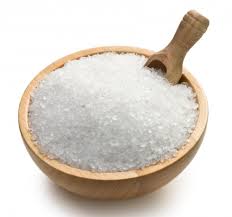Apple Cider Vinegar
Indications: Apple Cider Vinegar acts as an astringent , it draws swelling and fluid away from the injury and can be applied for extensive periods.
Apple Cider Vinegar is applied typically to a sprain or twist, but can be used as a poultice on any type of soft tissue trauma. This Includes bruises, inflammation, soreness and areas of redness or heat.
Apple Cider Vinegar has literally hundreds of uses and has been reported to be of great benefit for arthritis patients, as a hair rinse, for stings and rashes and even an aid to weight loss.
Application: (External)
The vinegar is applied by soaking a flannel or piece of white cloth in neat vinegar, although this can be diluted for those with sensitive skin or for small children. The wet cloth can be applied directly to the bruise or inflamed area and then wrapped lightly in cling film in order to retain the moisture and left on for one or 2 hours.
Frequency: The Applie Cider Vinegar can be left on for up to 2 hours, and after this a break of an hour or so is recommended in order to allow the skin to dry. This pattern can be repeated for as long as is necessary. Anyone with extensive bruising or trauma should seek medical advice.
Epsom Salts (Magnesium Sulphate)

Indications:
Epsom salts can be used where there is calcification in the joints or where there is stiffness and soreness after a Bowen treatment or physical activity such as sport, or gardening. It can be used locally for hand or foot calcification but also used as a general aid to relaxation and a preventative. It works by reducing the acid build up in the body and working towards a normal acid/alkaline balance and is also very usefu in cases of fever and colds or flu. Epsom salts can be also used by people with skin conditions such as dermatitis or eczema.
Application:
Epsom salts can be purchased from farm shops some chemists or in large bags off of amazon or ebay (the cost effective choice) . If being used for foot or hand soak, use 2 tablespoons in approx 2 litres of water and soak hands or feet for 15/20 minutes. In a normal bath the amounts are approx 10oz in a bath of around 70 litres. This equates to a lrge mug full in a normal bath. The water should not be too hot, as this will raise the temperature of the body to sometime uncomfortable levels.
Frequency:
Epsom salts can be used whenevr taking a bath, but for specific problems such as bunions, regular soaking is required, perhaps averaging five times a week, in order to reduce calcification. The use of idosalve to reduce bunions is also indicated.
Washing Soda (Sodium Carbonate)

Indications: Washing Soda is traditionally used as a water softener and assistant to degreasing. For washing oily massage towels it is very useful, but it also has the useful quality of attracting moisture.
To this end we can use washing soda as a highly effective tool to reduce swelling in a swollen joint, such as an ankle or knee.
I is important that the practitioner establish that there is no inflammation in the joint, indicated by heat, bruising, tenderness or redness. The pack can be used on anyone an dis applied by the client at home.
Application:
Washing soda comes in two forms: crystals and flakes. I f the crystals are used then they must be crushed to the consistency of coarse salt. Crystals are preferable as the flakes tend to be a little small.
Once crushed they should be placed into a piece of cotton which is then folded to make a pack approximately 5cm sq. Any piece of cotton will do, but a cotton handkerchief is ideal for this. The pack must be completely dry. The pack is then placed on the lower part of the swelling and is held in place by some sort of tie, a piece of elastic bandage or even a pair of tights. The washing soda can draw allot of fluid from the swollen knee or ankle and so the area should be wrapped in a small towel which will soak up the fluid. Again this can be tied on using tape or anything that will hold it in place.
The pack should be applied just before bed-time as it is best left on overnight fo around 6 hours.
Frequency:
Once the swelling has been reduced or removed there is no need for futher packs, but until a satifactory outcome is achieved packs can be applied every night, but no more than 3 per week.
